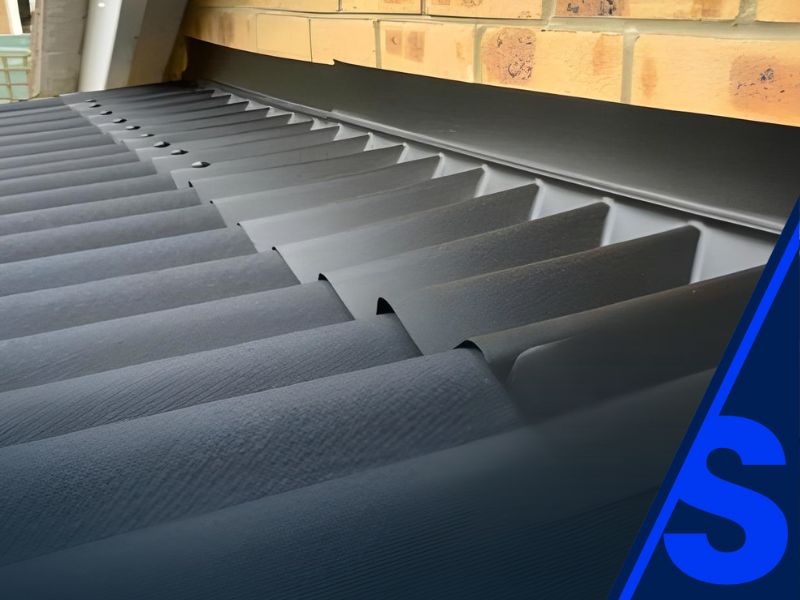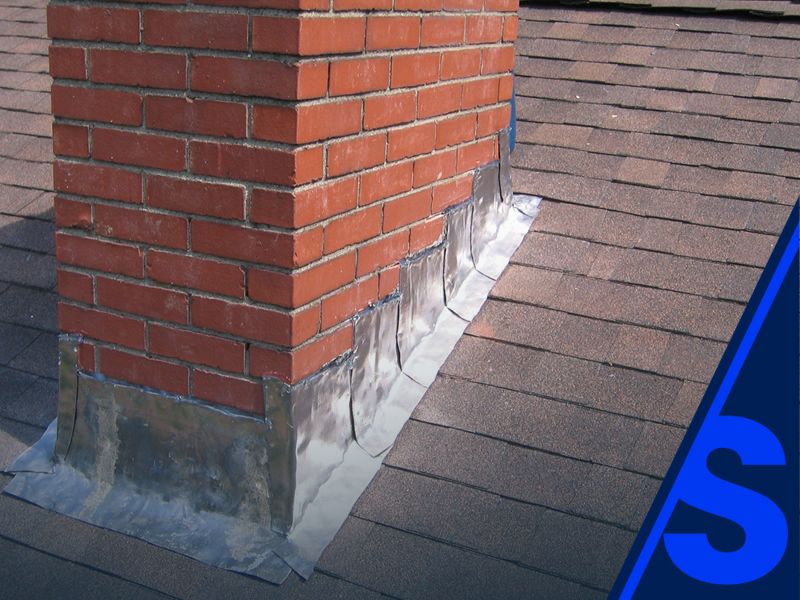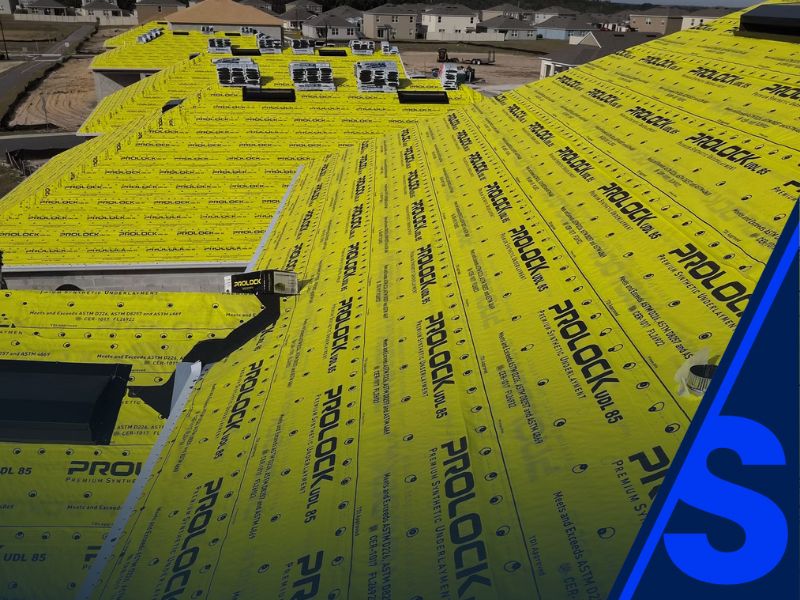Table of Contents
Roof flashing is one of the most critical details in any new roof installation. Builders know that the smallest weakness around a chimney, wall, or roof penetration can quickly turn into a costly leak, warranty issue, or callback. Choosing the right flashing type and ensuring it is installed to code while also following best practice is essential for long-term roof protection.
This article explores the differences between step flashing and apron flashing, when each is required by code, and when builders should go beyond minimum standards to protect your roof and reputation. We will review the common types of roof flashing, roof flashing materials, and the best installation practices to help contractors and project managers avoid expensive mistakes.
For builders seeking project certainty and code-compliant outcomes, CitySide New Construction Roofing Services provides professional installation, QA documentation, and scheduling support tailored for large-scale builds.
Why is Roof Flashing So Important in New Construction
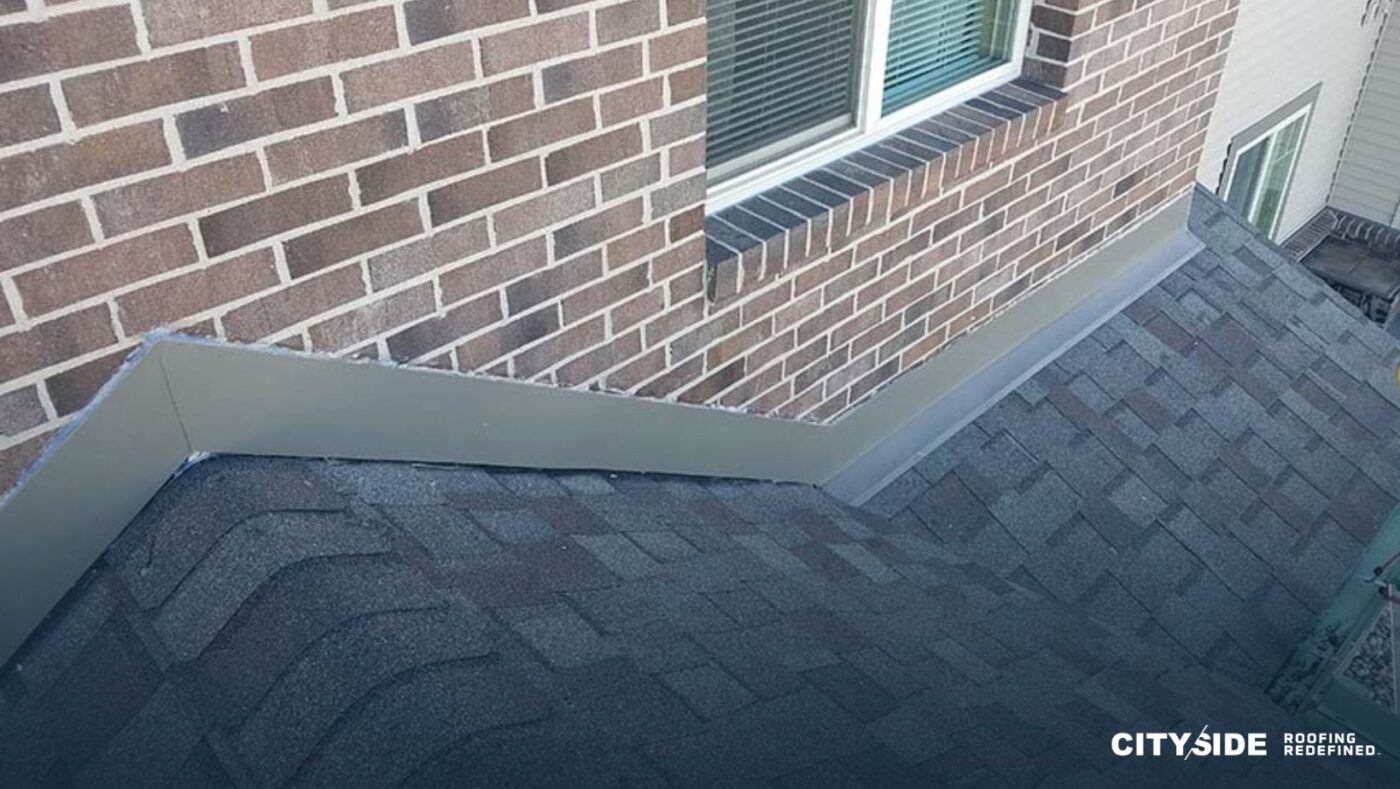
Roof flashing is a thin piece of metal or membrane material installed where the roof meets walls, chimneys, valleys, or penetrations. Its role is simple but vital: flashing directs water away from vulnerable seams so moisture does not enter the building envelope.
Because roof flashing is a thin barrier, its effectiveness depends on choosing the right type of flashing installation and ensuring every flashing piece of flashing is placed correctly. Poor flashing installation is one of the leading causes of leaks and roof repairs. Builders who want to reduce callbacks and warranty claims must take flashing as seriously as structural roof assemblies.
What Are the Common Types of Roof Flashing
The roofing industry has developed various types of roof flashing to address different conditions. Common roof flashing includes:
- Step flashing, used along vertical walls that intersect the roof
- Apron flashing, used at the base of a wall or headwall
- Valley flashing, protecting roof valleys where two roof planes intersect
- Counter flashing, installed over base flashing to protect joints
- Kickout flashing, directing water away from the wall and into the gutter
- Drip edge flashing, protecting roof edges from water infiltration
- Skylight flashing, sealing around skylight penetrations
- Vent pipe flashing, sealing around plumbing vents and small roof penetrations
Knowing the different types of roof flashing is essential because no single piece of flashing can address every condition. Each roof requires a combination of common types of flashing to perform properly.
Step Flashing vs Apron Flashing What’s the Difference
Step flashing is used where a roof meets a vertical wall. Each piece of metal flashing is installed with a row of shingles, creating a layered system that directs water away from the wall or other vertical surface and onto the roof surface below.
Apron flashing, sometimes called headwall flashing, is installed at the base of a wall or where the roof meets a vertical wall at the bottom of a slope. Apron flashing is a single continuous piece of flashing that covers the joint, providing a clean surface to direct water away.
The debate of step flashing vs apron flashing often comes down to whether the goal is code minimum or best practice. While some codes allow apron flashing in places where step flashing would also work, step flashing is generally the more durable choice. Builders who want to protect your roof over the long term should consider installing step flashing even if apron flashing would technically meet code.
What Flashing Types Do Building Codes Require
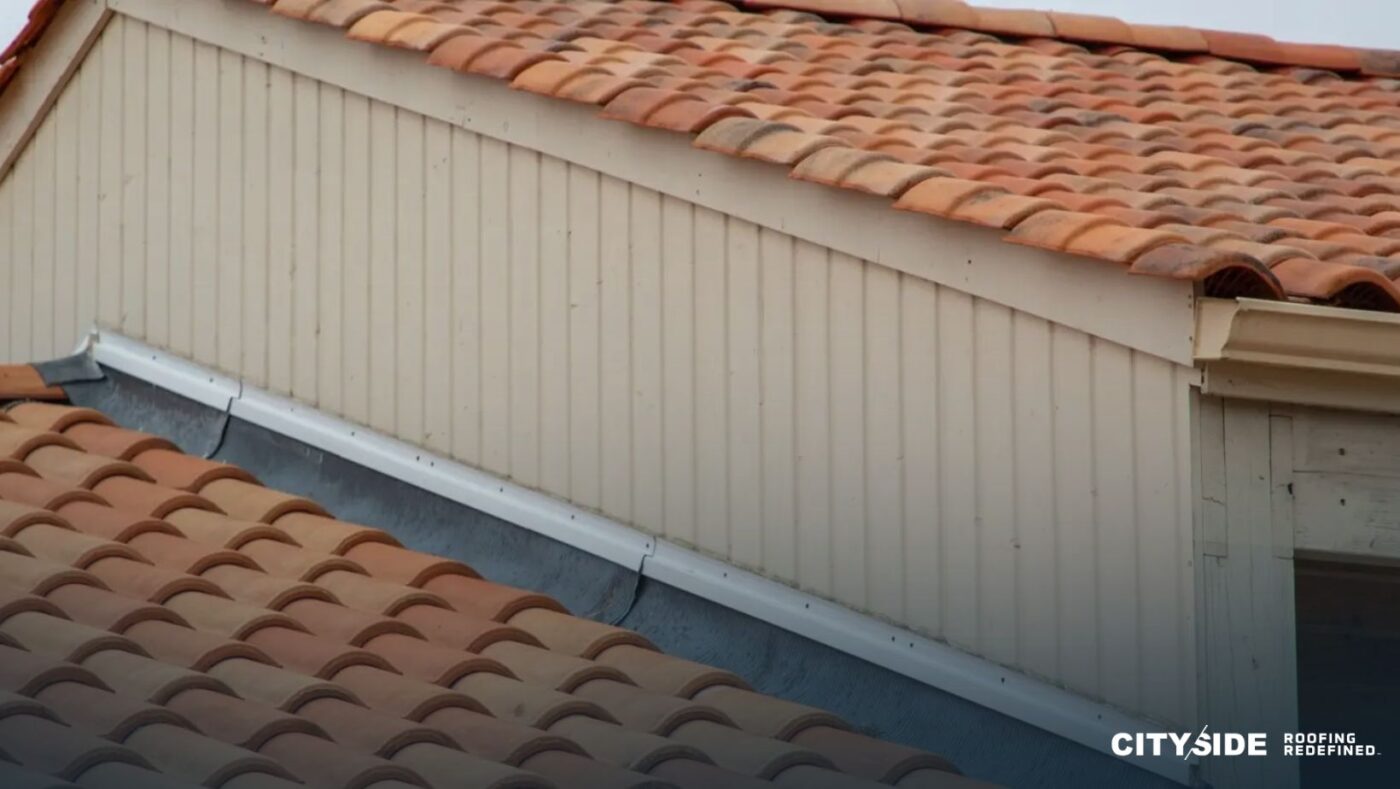
Building codes vary by jurisdiction, but most codes require flashing around chimneys, walls, roof penetrations, and roof edges. Codes specify that flashing is used for roof protection where water intrusion is likely.
The Florida Building Code and International Residential Code require step flashing at roof-to-wall intersections, though some inspectors accept apron flashing in specific low-slope or minor intersections. However, reputable roofing contractors recommend installing both apron flashing and step flashing where appropriate to ensure flashing protects the roof system from leaks.
Which Flashing Materials Perform Best
Flashing material choices affect both durability and cost. Roof flashing materials include:
- Aluminum flashing, lightweight and corrosion-resistant but prone to damage in coastal salt exposure
- Galvanized steel, cost-effective and durable when coated
- Copper, long-lasting and highly durable, though expensive
- Lead, historically used but less common today due to environmental concerns
Most flashing is made of metal, but elastomeric membranes and specialized products are sometimes used for unique roof features. Builders should specify flashing materials that align with the roofing material, roof deck, and local code requirements.
For large-scale projects, CitySide Roofing Material Integration ensures approved flashing materials are matched to substrates and documented for warranty compliance.
How Does Step Flashing Work with Shingles
Step flashing is installed during roof installation alongside each shingle course. A piece of flashing is placed against the vertical wall, then covered by the next shingle. The process repeats, creating overlapping flashing pieces that direct water away from the wall and down the roof plane.
Roofers install step flashing carefully to avoid gaps and ensure each piece of flashing overlaps the next. This layered design prevents water from seeping behind the shingles and protects the roof deck. Properly installed flashing creates a secondary drainage plane that enhances roof protection and reduces the chance of leaks.
When is Apron Flashing the Better Choice
Apron flashing is often the best practice where the roof meets the base of a vertical wall or around chimneys. Apron flashing covers a wider area with a single piece of metal, which helps direct water away from the wall and into the roof system.
Around chimneys, apron flashing is typically paired with base flashing and counter flashing to create a watertight seal. Apron flashing may also be combined with kickout flashing at roof edges to prevent water from running behind siding.
Builders should note that apron flashing cannot always replace step flashing. Each type of flashing installation serves a specific purpose, and mixing them incorrectly can lead to roof flashing problems and costly roof repairs.
What Role Does Counter Flashing Play
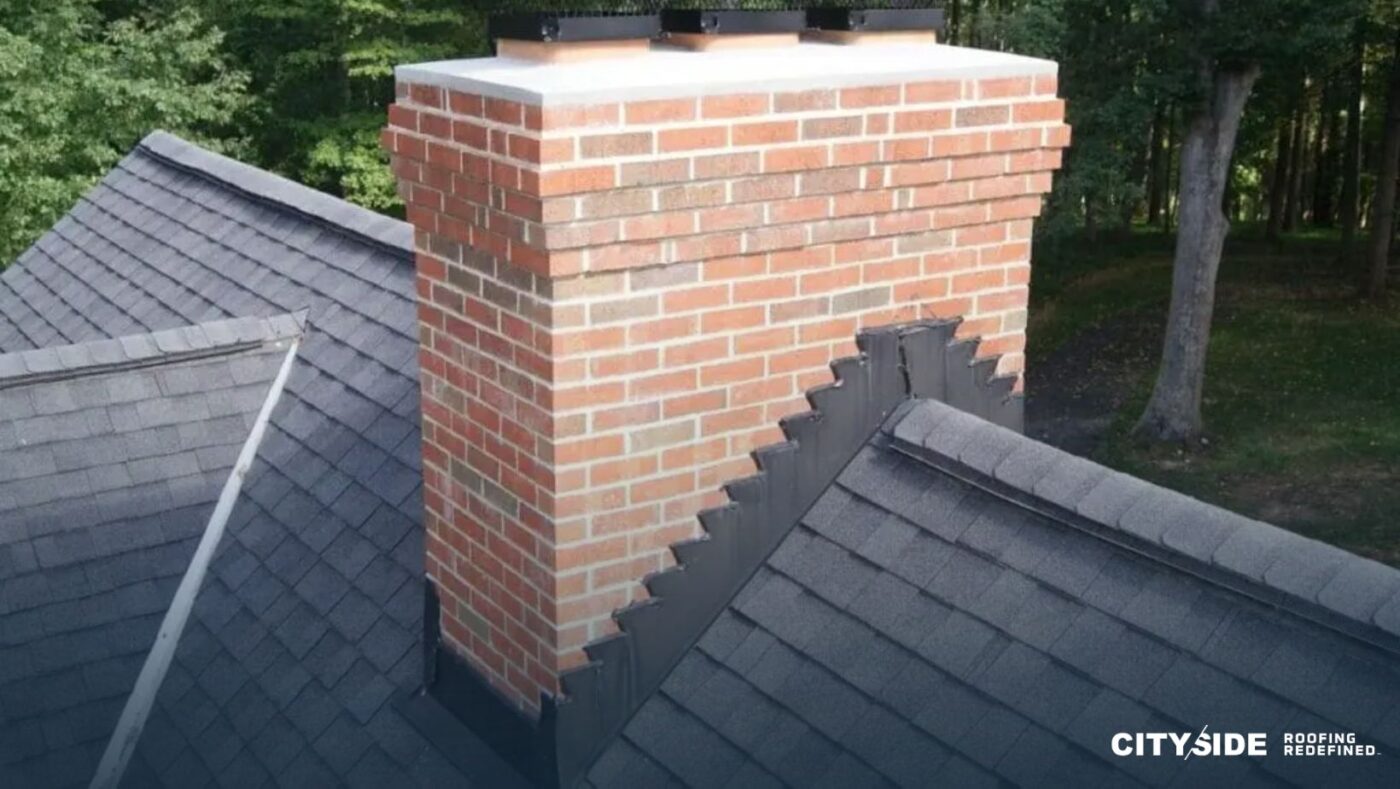
Counter flashing is installed over base flashing or apron flashing to protect the joint from exposure. It is commonly used in chimney flashing systems, where counter flashing is mortared into the chimney and overlaps base flashing.
The purpose of counter flashing is to direct water away from vulnerable seams and keep moisture from penetrating around chimneys. When builders install counter flashing correctly, it provides redundancy that keeps the roof watertight and compliant with building codes.
How Do Roofers Handle Flashing at Valleys
Roof valleys where two roof planes meet are particularly vulnerable to leaks. Valley flashing, usually a wide piece of metal flashing, is installed beneath shingles to direct water away from the valley joint.
There are two common types of valley flashing installations: open valleys, where the flashing is visible, and closed valleys, where shingles cover the flashing. Both can be effective, but codes in some areas prefer open valleys because they shed water more efficiently.
Builders should always specify valley flashing for valleys where two roof sections intersect. Without valley flashing, the risk of leaks and water damage is significantly higher.
What About Flashing for Skylights and Roof Penetrations
Skylight flashing and vent pipe flashing are special flashing systems designed to seal around roof penetrations. Flashing protects these vulnerable areas by creating a watertight seal between the roofing material and the penetration.
Skylight flashing typically includes head flashing, continuous flashing, and step flashing around the skylight frame. Vent pipe flashing is often a boot-style piece of flashing that seals directly to the pipe and roofing material.
Professional roofing contractors recommend using new flashing whenever a skylight or vent is installed or replaced, rather than reusing old flashing pieces.
Best Practices for Builders Beyond Code
While codes define minimum requirements, best practices in the roofing industry go further to protect your roof. These practices include:
- Installing step flashing even where apron flashing may technically meet code
- Using kickout flashing at roof edges to direct water into the gutter and away from the wall
- Combining apron flashing, base flashing, and counter flashing around chimneys for redundancy
- Specifying corrosion-resistant flashing materials for coastal projects
- Documenting flashing installation for warranty and code compliance
Builders who follow these best practices reduce warranty claims, improve project quality, and deliver long-lasting protection for clients.
Conclusion Builder Takeaways
Step flashing vs apron flashing is more than just a technical choice. It is a decision that affects roof performance, code compliance, and long-term durability. Builders who understand the differences between flashing types and insist on best practices protect their projects from leaks, callbacks, and warranty disputes.
Key points to remember:
- Roof flashing is essential to direct water away from vulnerable seams
- Step flashing is used at vertical wall intersections, while apron flashing covers base joints
- Building codes typically require step flashing, but apron flashing may be used in specific cases
- Counter flashing, valley flashing, and kickout flashing are critical parts of your roof system
- Best practices go beyond code by combining flashing types for redundancy
- Choosing the right roof flashing materials ensures long-term durability
For builders managing large-scale projects, the safest path is to partner with a reputable roofing contractor to ensure all flashing installation is code-compliant, documented, and optimized for roof protection.
Contact CitySide Roofing today to schedule a consultation and ensure your next roof installation meets both code and best practice.
